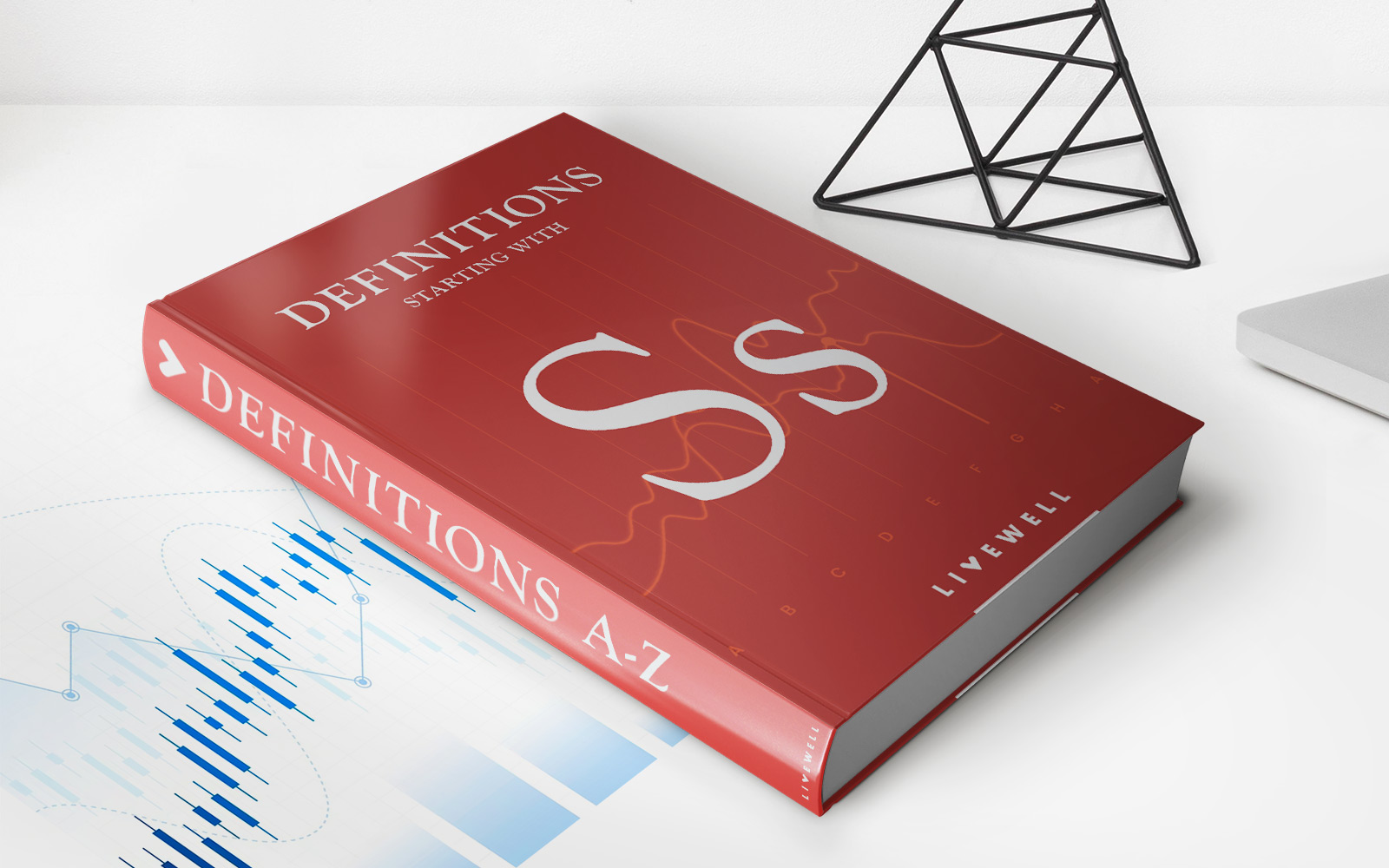Home>Finance>What Is The Difference Between A Student Loan And A Grant?


Finance
What Is The Difference Between A Student Loan And A Grant?
Published: October 20, 2023
Discover the key distinctions between student loans and grants in finance. Understand which option is best for your educational financing needs.
(Many of the links in this article redirect to a specific reviewed product. Your purchase of these products through affiliate links helps to generate commission for LiveWell, at no extra cost. Learn more)
Table of Contents
Introduction
Welcome to the world of higher education where dreams are nurtured and knowledge is pursued. As a student, one of the crucial aspects to consider when planning for college or university is how to finance your education. While there are various options available, two common sources of funding are student loans and grants. Although they both provide financial assistance, there are significant differences between the two that every aspiring student should understand. In this article, we will delve into the key distinctions between student loans and grants.
A student loan is a financial aid option offered by banks, private lenders, or government agencies that allows students to borrow money to cover their educational expenses. This borrowed amount must be repaid over time, typically with interest. On the other hand, a grant is a form of financial aid that is awarded to students based on their financial need or academic achievements. Unlike loans, grants do not require repayment, making them an attractive option for students seeking financial assistance.
Understanding the differences between student loans and grants is crucial as it can impact your financial future. This article aims to provide you with a comprehensive comparison of the two, helping you make informed decisions regarding your higher education financial plan.
Definition of Student Loan
A student loan is a type of financial assistance that enables students to borrow money to cover their educational expenses. These expenses may include tuition fees, textbooks, accommodation, and other related costs. Student loans are typically offered by banks, private lenders, or government agencies, and they must be repaid with interest over a specified period of time.
The terms and conditions of student loans vary based on the lender and the type of loan. Some loans may have fixed interest rates, while others have variable rates that can fluctuate over time. The repayment period can also vary, ranging from a few years to several decades, depending on the loan amount and the borrower’s financial circumstances.
Student loans can be classified into two main types: federal student loans and private student loans. Federal student loans are offered by the government and generally have lower interest rates and more flexible repayment options. These loans include options such as Stafford loans, Perkins loans, and PLUS loans. Private student loans, on the other hand, are offered by private institutions, such as banks or credit unions, and their terms and interest rates are typically determined by the lender.
When taking out a student loan, it is essential to carefully consider the terms and conditions, including interest rates, repayment options, and any associated fees. It is also important to estimate your future income and job prospects to ensure that you can comfortably repay the loan after completing your education.
Student loans can provide the necessary financial support for individuals who wish to pursue higher education but lack the funds to do so upfront. However, it is important to borrow responsibly, only taking out what is necessary and being proactive in managing the repayment process to avoid excessive debt burden in the future.
Definition of Grant
A grant is a form of financial aid that is awarded to students based on various criteria such as financial need, academic achievement, or specific talents. Unlike student loans, grants do not require repayment, making them a highly desirable form of assistance for students pursuing higher education.
Grants are typically provided by government agencies, educational institutions, or private organizations. These entities offer grants as a means of supporting students and promoting access to education. Grants can cover a wide range of educational expenses, including tuition fees, textbooks, accommodation, and other related costs. The amount awarded through a grant can vary significantly, depending on the type of grant and the financial need or qualifications of the student.
There are different types of grants available to students. Need-based grants are awarded to individuals who demonstrate financial need based on their family income and resources. These grants aim to assist students from low-income backgrounds to overcome financial barriers and pursue their educational goals.
Merit-based grants, on the other hand, are awarded to students who have excelled academically, displayed exceptional talent in a particular field, or achieved notable accomplishments. These grants are typically offered to recognize and encourage students who have demonstrated outstanding academic or extracurricular achievements.
Grants can also be categorized as institutional grants or government grants. Institutional grants are provided directly by educational institutions to their enrolled students. These grants may have specific requirements or be based on a combination of need-based and merit-based criteria. Government grants, on the other hand, are granted by federal or state government agencies and are often based on financial need or specific demographic criteria.
Applying for grants usually involves submitting a formal application, which may require providing financial information, academic records, and personal essays. The application process and eligibility criteria may vary depending on the grant provider.
By securing grants, students can significantly reduce their educational expenses and alleviate the financial burden associated with pursuing higher education. Grants provide an important avenue for students with limited financial resources to access quality education and achieve their academic and career aspirations.
Key Differences Between Student Loan and Grant
While both student loans and grants provide financial assistance for higher education, there are several key differences between the two. Understanding these differences is crucial when considering your options for funding your education. Here are the main distinctions:
- Repayment: The primary difference between a student loan and a grant lies in the repayment requirement. Student loans must be repaid with interest over a specified period of time, typically after the borrower graduates or leaves school. In contrast, grants do not require repayment, making them a more attractive option for many students.
- Eligibility Criteria: Student loans are generally available to any student who meets the lender’s criteria, regardless of financial need or academic performance. Grants, on the other hand, often have specific eligibility criteria, such as financial need, academic achievement, or other specific qualifications. These criteria may limit the number of students who can qualify for grants.
- Application Process: Applying for a student loan usually involves completing a loan application, providing financial information, and sometimes obtaining a co-signer. The process can be more complex and time-consuming compared to grants. Grant applications typically require providing information about financial need, academic records, and personal essays, and may also involve submitting additional documentation.
- Funding Amount: The amount of funding available through student loans varies depending on factors such as the lender, the borrower’s financial need, and the cost of attendance. In contrast, grants can vary widely in terms of the amount awarded. Some grants may cover a significant portion of educational expenses, while others may provide a smaller amount.
- Purpose of Funding: Student loans can be used to cover a wide range of educational expenses, including tuition fees, textbooks, accommodation, and living expenses. Grants often have specific purposes, such as covering tuition fees or assisting with research projects, and may come with certain restrictions on how the funds can be used.
It is important to carefully consider these differences when deciding between a student loan and a grant. While grants may seem more appealing due to their lack of repayment requirement, they may not be available to all students or may not cover the full cost of education. Student loans, on the other hand, provide a means to finance education but come with the responsibility of repayment.
Ultimately, the choice between a student loan and a grant will depend on your individual circumstances, financial need, and eligibility. It is advisable to research and explore all available options, including grants, scholarships, and other forms of financial aid, to create a funding plan that best suits your needs and financial situation.
Repayment
One of the most significant differences between student loans and grants is the repayment requirement. When it comes to student loans, repayment is a crucial aspect to consider. Upon graduation or leaving school, borrowers are obligated to start repaying the loan amount along with any accrued interest. The repayment process typically begins after a grace period, which allows borrowers to find employment and establish their financial stability.
The repayment terms for student loans can vary depending on the type of loan and the lender. Federal student loans often offer flexible repayment plans, including income-driven repayment options that adjust the monthly repayment amount based on the borrower’s income level. Private student loans may have fixed or variable interest rates, and the repayment terms are set by the lender.
The repayment period for student loans can range from several years to several decades, depending on the loan amount and the borrower’s financial circumstances. It is important to understand the terms of the repayment plan and calculate the total amount that will be paid back over the loan’s duration.
On the other hand, grants do not require repayment. This is what makes them highly desirable for students seeking financial assistance. Grants provide a financial boost without the burden of having to pay back the awarded amount. However, it is worth noting that some grants may have specific requirements, such as maintaining a certain academic standard or completing a particular course of study, to ensure that the funds are used for educational purposes.
When considering the repayment aspect, it is essential to carefully evaluate your financial situation and potential future income. Understanding your repayment obligations will help you make informed decisions and manage your finances effectively. It is advisable to create a budget and allocate funds towards loan repayments to ensure timely payments and avoid defaulting on the loan.
If you find yourself struggling to repay your student loans, various repayment assistance programs, such as loan forgiveness options, income-driven repayment plans, or deferment/forbearance, may be available. These options can provide temporary relief or forgiveness for a portion of your loan balance, depending on your circumstances and eligibility.
In summary, student loans require repayment while grants do not. Understanding the repayment terms, options, and potential assistance programs will help you navigate the process and ensure responsible management of your loan obligations.
Eligibility Criteria
When it comes to accessing student loans or grants, both types of financial assistance have specific eligibility criteria that students must meet. However, the criteria differ significantly between student loans and grants. Let’s take a closer look at the eligibility requirements for each:
Student Loans:
Student loans are generally available to any student who meets the lender’s criteria, regardless of financial need or academic performance. Unlike grants that often focus on specific qualifications, student loans are more accessible to a broader range of students. The main eligibility factors for student loans typically include:
- Enrollment in an accredited educational institution: Students must be enrolled or accepted into a qualifying college, university, or vocational program to be eligible for student loans.
- Citizenship or residency: In many cases, student loans are available only to U.S. citizens or eligible non-citizens. International students may have limited options for student loans.
- Credit history and ability to repay: Some private lenders may require a credit check or consider the borrower’s income and employment history to determine eligibility and loan terms.
Grants:
Grants, on the other hand, often have specific eligibility criteria that focus on financial need, academic achievement, or other specific qualifications. The criteria for grants can vary depending on the granting organization or institution. Common factors considered for grant eligibility include:
- Financial need: Many grants are need-based and require students to demonstrate their financial need by providing information about their income, assets, and family resources.
- Academic performance: Merit-based grants are often awarded to students who have achieved exceptional academic success or demonstrated talent in a particular field.
- Field of study or research focus: Some grants are specific to certain majors or areas of study, targeting students who are pursuing specific fields or conducting research in particular areas of interest.
- Demographic or minority status: Certain grants may be available for students from underrepresented groups, such as ethnic minorities, women in STEM fields, or first-generation college students.
It is important to thoroughly research and understand the eligibility criteria for both student loans and grants. Being aware of the requirements can help you identify the most relevant opportunities and focus your efforts on securing the financial assistance you need for your education.
Additionally, it is worth noting that students often have the option to apply for multiple grants and loans simultaneously, further increasing their chances of receiving financial aid. Consulting with financial aid advisors and utilizing online resources can provide valuable insight into the various options available and help you determine your eligibility for different types of financial assistance.
Application Process
The application process for both student loans and grants involves specific steps and requirements that prospective students must follow. While the process can vary depending on the type of loan or grant and the lending institution or granting organization, let’s explore the general application process for each:
Student Loans:
1. Research and Compare: Begin by researching different loan options and comparing interest rates, terms, and repayment options. Understand the specific requirements and conditions of the loans you are considering.
2. Complete the Free Application for Federal Student Aid (FAFSA): To apply for federal student loans, you must complete the FAFSA form. This form collects your financial information, which is used to determine your eligibility for federal student aid programs.
3. Compare Financial Aid Offers: After submitting the FAFSA, you will receive a Student Aid Report (SAR) that outlines your expected family contribution (EFC). Educational institutions will use this information to create a financial aid package, which may include federal student loans, grants, scholarships, or work-study opportunities. Compare the financial aid offers from different schools or lenders and assess their affordability.
4. Accept or Decline Loan Offers: Once you receive the financial aid package, carefully review the loan offers. Evaluate the terms, interest rates, and repayment options before accepting or declining each loan offer.
5. Complete Loan Entrance Counseling and Sign a Master Promissory Note (MPN): If you decide to accept a federal student loan, you may be required to complete entrance counseling and sign an MPN. This step ensures that you understand your rights and responsibilities as a borrower.
6. Provide Additional Documentation: Depending on the lender and loan type, you may need to provide additional documentation, such as proof of enrollment or income verification.
Grants:
1. Research Grant Opportunities: Begin by researching grant options available to you. Explore government grant programs, institutional grants provided by colleges or universities, and grants offered by private organizations or foundations.
2. Determine Eligibility: Understand the eligibility criteria for each grant you are interested in. Determine if you meet the specific requirements, such as financial need, academic achievement, or field of study.
3. Gather Required Documents: Prepare the necessary documents for your grant application, such as financial records, academic transcripts, recommendation letters, and personal statements or essays.
4. Submit the Application: Complete the grant application form and submit it, along with the required documents, by the specified deadline. Pay attention to any additional instructions or specific requirements outlined in the application.
5. Follow up and Track Your Application: Keep track of your grant application status and any communication from the granting institution or organization. Follow up if necessary or provide any requested additional information.
6. Accept or Decline Grant Offers: If your grant application is successful, you will receive an offer detailing the grant amount and any additional terms or conditions. Review the offer carefully and make an informed decision to accept or decline the grant.
It is important to be diligent throughout the application process, ensuring that you meet all the deadlines and provide accurate and complete information. Keep copies of all application materials and correspondence for future reference.
Remember, seeking guidance from financial aid offices or seeking the help of professionals can provide further assistance in navigating the loan and grant application processes.
Funding Amount
The funding amount for student loans and grants can vary significantly depending on various factors, including the type of loan or grant, the student’s financial need, academic performance, and the cost of attendance. Understanding the funding amounts associated with each option is crucial when considering your financial needs for higher education.
Student Loans:
When it comes to student loans, the funding amount is determined by the lender, and it can vary based on the borrower’s financial need and the cost of attendance at the educational institution. Federal student loans, such as Stafford loans, have specific borrowing limits. These limits are determined based on the student’s grade level, dependency status, and whether the student’s parents are eligible for a Federal PLUS loan. Private student loans, offered by banks or credit unions, often have higher borrowing limits but may require a good credit history or a co-signer.
The total loan amount depends on the specific educational expenses that the student wishes to cover, including tuition fees, textbooks, accommodation, and living expenses. It is essential to borrow responsibly and only take out the necessary amount to minimize the burden of repayment after graduation.
Grants:
The funding amount for grants can vary widely. Some grants may cover a significant portion of the educational expenses, while others may provide a smaller amount. The funding amount is typically determined by the grant provider and depends on factors such as the student’s financial need, academic achievement, or the specific purpose of the grant.
Government grants, such as the Pell Grant in the United States, have set maximum funding amounts each year. The actual grant amount is determined based on the student’s expected family contribution (EFC), the cost of attending the institution, and enrollment status. Institutional grants provided by colleges or universities can also vary in amount, often based on financial need and available funds allocated by the institution.
It is important to carefully review the terms of the grant and understand the funding amount that will be provided. Take into consideration any additional criteria or restrictions attached to the grant, as this can affect the overall affordability of pursuing higher education.
It is worth noting that students often have the option to combine different sources of funding, such as grants, scholarships, and work-study programs, to cover their educational expenses. Exploring and considering all available options can help ensure that the funding amount is sufficient to meet the financial needs of your education.
Prioritize researching and applying for grants and scholarships, as they provide valuable financial support without the need for repayment. By carefully assessing your financial needs and exploring various funding opportunities, you can make informed decisions about how to finance your education effectively.
Purpose of Funding
The purpose of funding differs between student loans and grants as each serves distinct objectives when it comes to financing higher education. Understanding the purpose of funding associated with student loans and grants is essential for students seeking financial assistance for their educational expenses.
Student Loans:
Student loans are designed to provide financial support for students to cover various educational expenses. The funds obtained through student loans can be used for a range of purposes, including:
- Tuition Fees: Student loans can be utilized to pay for the cost of tuition, which is often one of the most significant expenses associated with higher education.
- Textbooks and Supplies: The loan amount can be used to purchase textbooks, reference materials, and other necessary supplies relevant to the student’s program of study.
- Accommodation and Living Expenses: Student loans can assist in covering the costs of housing, rent, utilities, and other living expenses during the education period.
- Transportation: Loans can be used to cover transportation expenses, such as commuting to and from campus or traveling for educational purposes.
- Technology and Equipment: The loan funds can be utilized to acquire essential equipment, such as laptops or software, required for coursework or research purposes.
It’s important for borrowers to use student loan funds responsibly and solely for educational purposes. Understanding the purpose of the loan ensures that the funds are utilized appropriately to meet the costs associated with pursuing higher education.
Grants:
The purpose of funding for grants also varies depending on the specific grant and its guidelines. Grants are typically awarded for specific purposes and may have restrictions on how the funds can be used. Examples of how grant funds can be allocated include:
- Tuition Assistance: Grants can be awarded to cover all or a portion of tuition fees, reducing the financial burden on students.
- Research and Projects: Some grants are designed to support students’ research endeavors or specific projects aligned with their field of study.
- Support for Underrepresented Communities: Grants can be provided to support students from marginalized or underrepresented communities, empowering them to pursue higher education despite financial constraints.
- Scholastic Achievement: Merit-based grants are often awarded to students who have demonstrated exceptional academic performance or extraordinary talent in specific areas.
- Community Outreach: Grants may be available for students who are engaged in community service or volunteering, encouraging social responsibility and active citizenship.
It is crucial to thoroughly read and understand the guidelines and restrictions associated with each grant. By doing so, students can ensure that the funds are used for their intended purposes and in accordance with the grant provider’s guidelines.
Both student loans and grants serve different purposes when it comes to funding higher education. Student loans provide a means to cover a variety of educational expenses, while grants are often targeted towards specific purposes or qualifications. By understanding the purpose of funding, students can make informed decisions about the types of financial aid that best suit their individual needs and circumstances.
Conclusion
When it comes to financing your higher education, understanding the differences between student loans and grants is essential. Both options provide financial assistance, but they have distinct characteristics that can significantly impact your financial future.
Student loans offer the opportunity to borrow money to cover educational expenses but come with the responsibility of repayment after graduation. Careful consideration of the loan terms, interest rates, and repayment options is crucial to ensure a manageable repayment process.
On the other hand, grants provide a valuable source of funding that does not require repayment. Grants are typically awarded based on financial need, academic merit, or other specific qualifications. They can significantly reduce the financial burden of pursuing higher education, allowing students to focus on their studies instead of worrying about loan repayment.
When deciding between student loans and grants, consider factors such as your financial situation, eligibility criteria, and the purpose of funding. Evaluate your ability to repay loans, explore grants that align with your qualifications, and assess the overall impact on your financial well-being both during and after your educational journey.
Remember to maximize your financial aid opportunities by thoroughly researching and applying for grants and scholarships, as these provide valuable support without the burden of repayment. Additionally, seek guidance from financial aid offices, professionals, and online resources to fully understand the available options and make informed choices.
Ultimately, the choice between student loans and grants will depend on your individual circumstances, financial needs, and goals. It’s important to create a comprehensive financial plan that considers all available resources and ensures that your education is financed in the most responsible and sustainable way possible.
By understanding the differences between student loans and grants and making informed decisions, you can navigate the financial aspects of higher education more effectively and pursue your academic and career aspirations with confidence.














